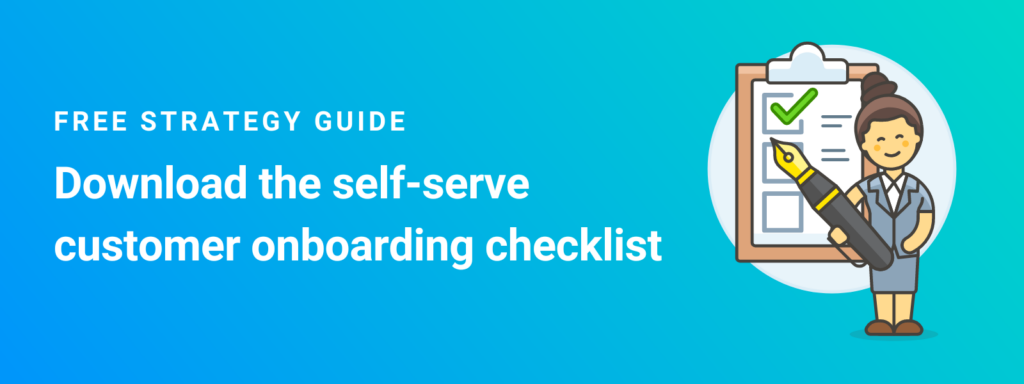Most customers don’t want to call for tech support anymore. A recent survey found that 67% of customers prefer self-service resources over speaking to a contact center agent.
Self-serve support can help businesses increase sales while providing customers with fast and convenient tech support. However, your company may miss out on the many benefits self-service offers if it doesn’t do one thing: track customer self-service metrics.
Customer self-serve metrics are a vital component of gauging the performance of your current self-service offerings. Below, we go over why tracking customer self-service metrics matters and the top metrics your business should be monitoring.
Best practices for optimizing your customer self-service offerings
More and more customers are turning to self-service as their preferred channel for tech support. However, the days of lengthy, text-based FAQ pages are long over.
Companies looking to create a better customer self-service experience should start by focusing on the onboarding process. An effective customer onboarding program is critical to increasing brand loyalty and reducing customer churn.
Additionally, verify that your self-serve resources are WCAG 2.0 compliant so that they’re accessible to customers with disabilities. One in four Americans has a disability, so a lack of accessible self-service options risks alienating a quarter of your customer base.
You’ll also want to ensure you optimize all self-service resources for learning. Visual mediums like interactive tutorials are much more effective than traditional print manuals. Research shows that visual aids improve learning by 400%.
Why you should track customer self-serve metrics
Customer self-service is critical to improving the customer experience. 88% of customers expect businesses to provide self-service options.
However, two-thirds of customers say their current company doesn’t offer enough resources to resolve their service issue independently. And you won’t know if your company is one of them if you aren’t tracking critical customer self-service metrics to understand what you’re doing well and identify areas for improvement.
Once you identify areas for improvement, you can focus on pivoting your customer service strategy accordingly. Proactively monitoring customer self-service metrics helps you reduce customer churn and improve customer retention.
Key metrics for evaluating customer self-service
Tracking metrics can help you understand how effectively your customer service materials resolve customer issues. Below are five critical customer self-service metrics your company should monitor.
First contact resolution (FCR) for customer self-service
First-contact resolution, similar to first-call resolution, refers to the rate at which your company can help customers resolve a tech support issue the first time they reach out to your company.
However, unlike first-call resolution, this initial point of contact doesn’t necessarily involve speaking with your contact center agents. It includes contact initiated through customer self-service models like chatbots or customer app support.
To calculate your company’s FCR, take the number of service requests successfully resolved on the first try and divide it by the total number of tech support requests. Then, multiply that number by 100 to get the total percentage. For example, if you had 75 cases you resolved at the first point of contact and divided it by 100 cases overall, you’d end up with an FCR rate of 75%.
Looking for more customer service metrics?
Net promoter score (NPS)
Net promoter score (NPS) is a vital metric for assessing the health of your company. NPS refers to how satisfied customers are with your services and the likelihood they'll recommend your business to someone else.
To determine your NPS score, you first need to survey your customers. Generally, you'll ask a question such as, "On a scale of one to 10, how likely are you to recommend our services to a friend?"
Once you get responses, you'll sort your customers into three categories: promoters, passives, and detractors. Promoters are customers who are likely to recommend your company to someone else. Passives have neutral feelings for your company. Detractors, on the other hand, wouldn't recommend doing business with you.
To calculate your NPS, you need to know the percentage of promoters, passives and detractors. You'll start by dividing the number of promoters by the total number of survey participants and multiplying by 100. Repeat the same steps for passives and detractors.
Then, subtract the percentage of promoters from the percentage of detractors. This will give you your NPS. Generally, you want to aim for an NPS of 50 or higher. However, a score of 80 or more is considered world-class.
User adoption and engagement
Once you implement a customer self-service solution, you need to understand how many customers are using it. Consider tracking metrics focused on customer engagement and adoption.
You can start by tracking the number of monthly users. Additionally, be sure to evaluate views of tutorial topics to understand what topics customers are searching for the most. You’ll also want to track engagement or completion rates to see whether customers who began using a self-service tutorial could follow the steps all the way through.
Tracking these metrics can help you understand the most popular self-service formats and features. You can also use these insights to troubleshoot potential issues. For example, if you notice a particular tutorial or topic has a low completion rate, you might check to see if the information is up-to-date or if it might be more engaging in a different format.
Customer churn rate
Customer churn rate evaluates the number of customers who stop doing business with your brand in a given time frame. To calculate your customer churn rate, divide the number of customers lost in a given period by the number of customers you had at the start. Multiply that number by 100 to determine the percentage.
For example, if you lost 50 customers in Q1 but had 200 at the start, you’d divide 50 by 200 and then multiply by 100. This would give you a customer churn rate of 25% for Q1.
Customer churn rate varies by industry, but the average churn rate for telecom and wireless companies is 21%. On the other hand, the churn rate for electronics is 11%. Cable service providers have an average churn rate of one in four customers.
Call deflection rate
Call deflection rate refers to how well your self-service channels can handle tech support inquiries that typically lead to customers calling your contact center. Call deflection strategies can include in-app support, self-service tutorials or conversational AI chatbots.
A higher call deflection rate can increase customer satisfaction, reduce churn and make it easier for service providers to scale support. Businesses with increased call deflection rates enjoy higher cost savings.
For example, Verizon, the recipient of over 32 J.D. Power awards, increased its call deflection rate to 85% after implementing a new self-service model. As a result, the company saves over one million dollars per contact center annually.
Track customer self-serve metrics to improve CX
Self service is now an integral part of creating a better customer experience. However, you need to know how your support offerings perform to develop an effective customer service strategy. By tracking customer self-serve metrics listed above, you can understand what your self-service offerings are doing well and identify areas for improvement.

Are you looking for a customer self-service solution that helps you scale support and improve vital metrics like NPS? As a leader in customer self-service, Ozmo Self Serve is trusted by Verizon, TELUS, Google and more. Learn more about the future of tech support today!



